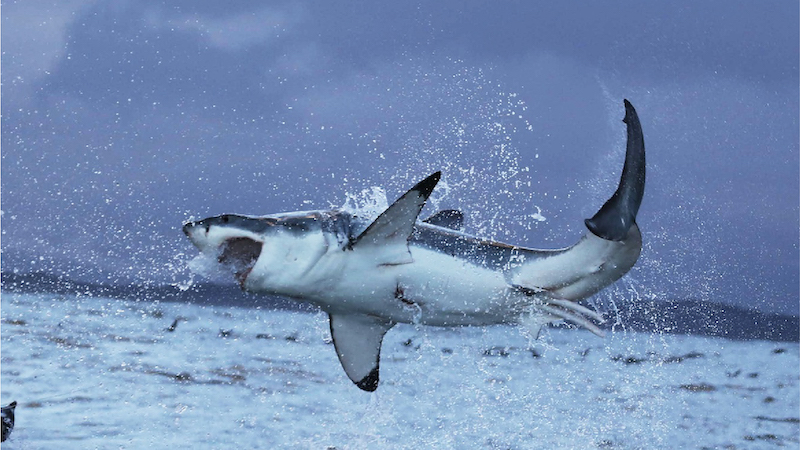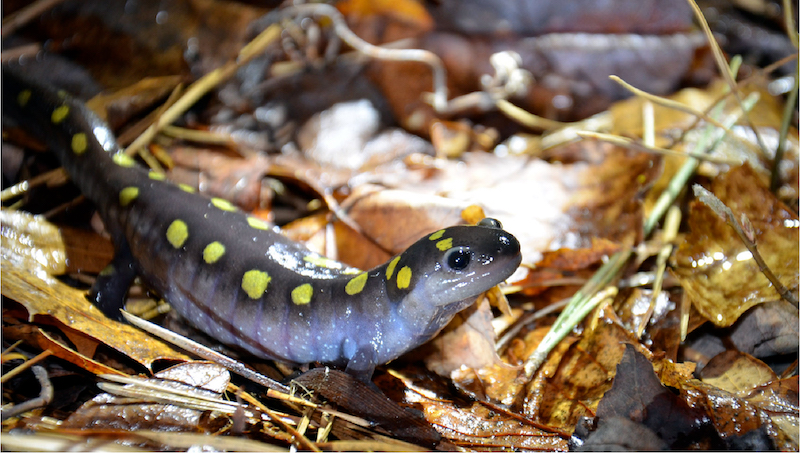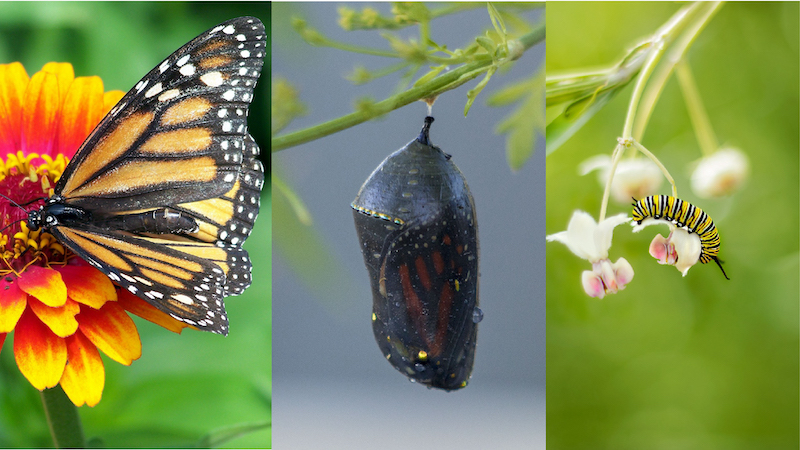What's in a Name?
Instructional Level: High School
Driving Question(s):
How is a changing climate related to fragile ecosystems like vernal pools and how does that relationship impact biodiversity and, in particular, the spotted salamander?
Climate changes affect both the vernal pool and the spotted salamander in different ways. A warming climate may mean less winter precipitation which leads to smaller vernal pools. A warmer climate will stimulate earlier migration dates for the salamander with smaller available habitat for reproduction.
LESSON PLAN STANDARDS:
Engagement
Students are introduced to the physical features of the spotted salamander (Ambystoma maculatum) and will correlate those features with the scientific name.
Objectives
Students will:
- Visually examine images of three living organisms.
- Describe prominent physical characteristics of each organism.
- Explain how scientific names can relate to physical characteristics.
Lesson Materials
- Image of great white shark
- Image of spotted salamander
- Image of spotted salamander with anatomical features labeled
- Image of monarch butterfly
Procedures
Preparation
|
Part I
|
Part II
|
Part III – Evaluation
|
Standards
HS-LS1-2 Developing and Using Models
Modeling in 9–12 builds on K–8 experiences and progresses to using, synthesizing, and developing models to predict and show relationships among variables between systems and their components in the natural and designed worlds.
- Develop and use a model based on evidence to illustrate the relationships between systems or between components of a system.
References
- Shark Image: White Shark photo © Mauricio Hoyos
www.floridamuseum.ufl.edu/discover-fish/species-profiles/carcharodon-carcharias - A guide to the common name of the white shark
www.floridamuseum.ufl.edu/discover-fish/species-profiles/carcharodon-carcharias - Salamander Image
www.mdsg.umd.edu/topics/k-12-lesson-plans/symbiosis-backbone - Monarch Butterfly Image: Ranger Elena Gilroy
dnr.maryland.gov/wildlife/Pages/plants_wildlife/monarch.aspx - List of Latin and Greek words commonly used in systematic names
A good list of terms used in scientific nomenclature although monarch and white shark root words are not listed here.
en.wikipedia.org/wiki/List_of_Latin_and_Greek_words_commonly_used_in_systematic_names





